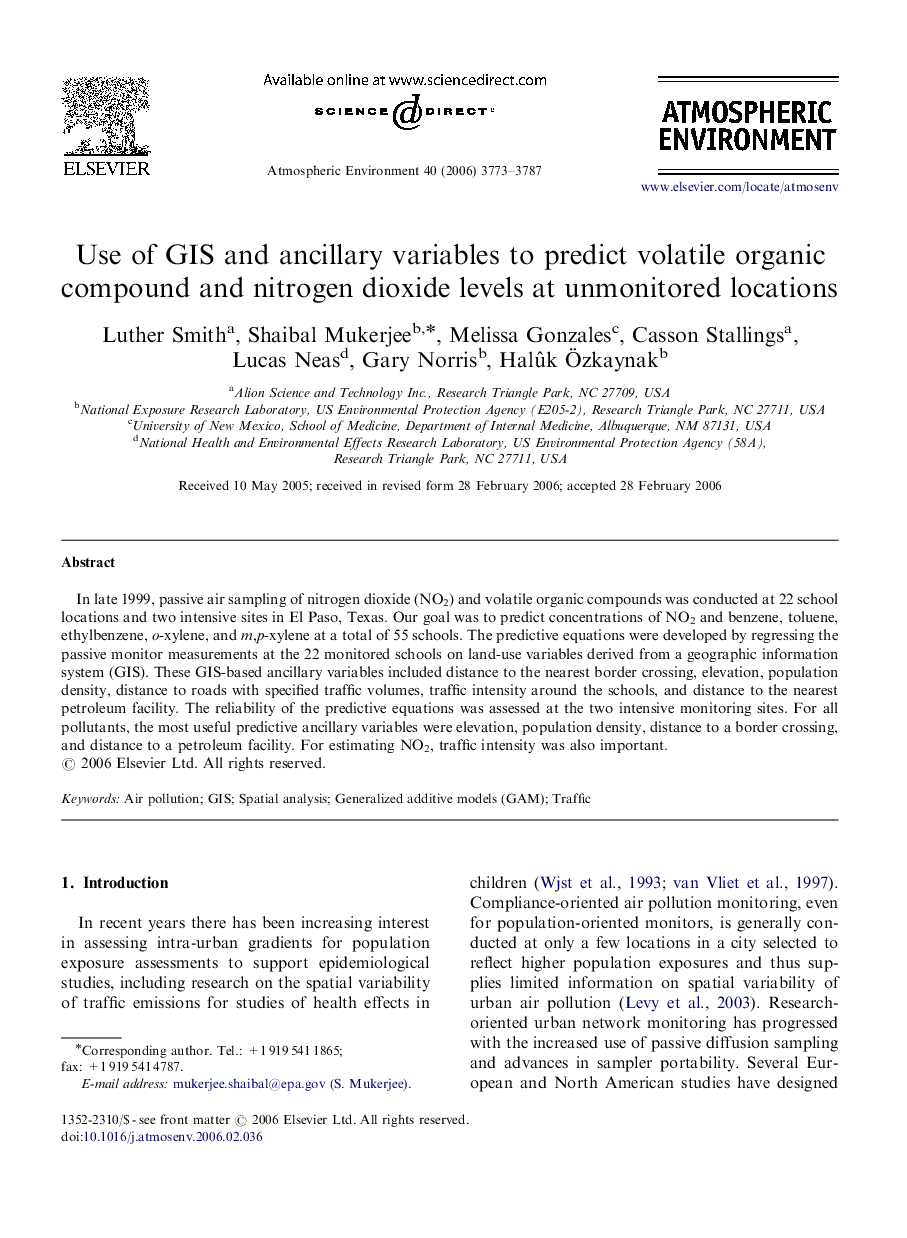| Article ID | Journal | Published Year | Pages | File Type |
|---|---|---|---|---|
| 4444242 | Atmospheric Environment | 2006 | 15 Pages |
In late 1999, passive air sampling of nitrogen dioxide (NO2) and volatile organic compounds was conducted at 22 school locations and two intensive sites in El Paso, Texas. Our goal was to predict concentrations of NO2 and benzene, toluene, ethylbenzene, o-xylene, and m,p-xylene at a total of 55 schools. The predictive equations were developed by regressing the passive monitor measurements at the 22 monitored schools on land-use variables derived from a geographic information system (GIS). These GIS-based ancillary variables included distance to the nearest border crossing, elevation, population density, distance to roads with specified traffic volumes, traffic intensity around the schools, and distance to the nearest petroleum facility. The reliability of the predictive equations was assessed at the two intensive monitoring sites. For all pollutants, the most useful predictive ancillary variables were elevation, population density, distance to a border crossing, and distance to a petroleum facility. For estimating NO2, traffic intensity was also important.
